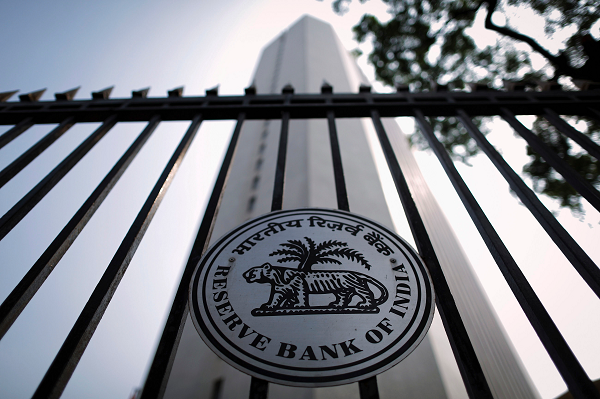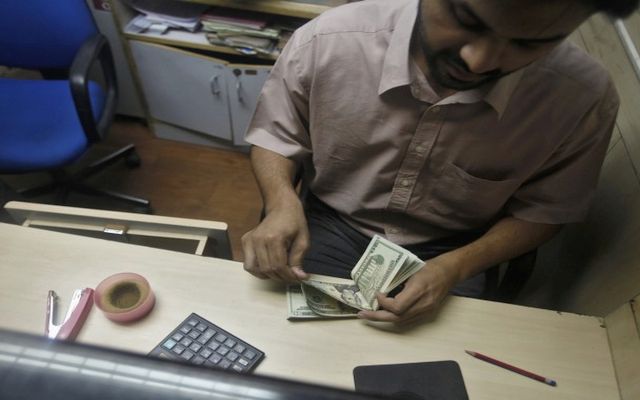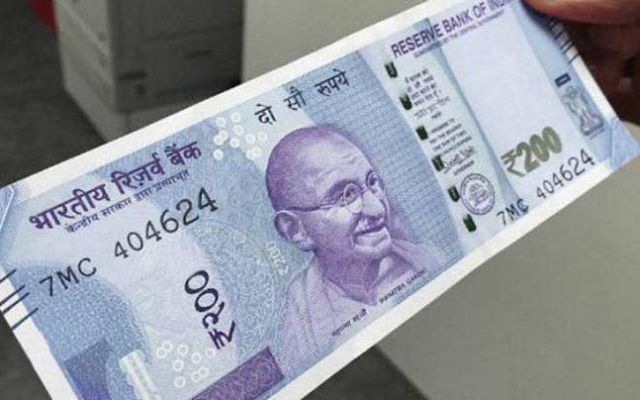
by admin | May 25, 2021 | Banking, Economy, Markets, News
 RBI
RBI
Mumbai : Revealing the low efficacy of last November’s demonetisation of high-value currency, the RBI said on Wednesday that of the Rs 15.44 lakh crore of notes taken out of circulation, Rs 15.28 lakh crore, or almost 99 per cent, had returned to the system by way of deposits by the public.
“Subject to future corrections based on verification process when completed, the estimated value of SBNs received as on June 30, 2017 is Rs 15.28 trillion,” the Reserve Bank of India (RBI) said in its annual report for the last fiscal.
According to the RBI, 89 million pieces of the banned Rs 1,000 totalling Rs 8,900 crore had not been returned (by March 2017) out of 6,858 million such notes amounting to Rs 6.85 lakh crore. Thus the figure not returned till end March amounted to a mere 1.3 per cent of Rs 1,000 notes in circulation before the demonetisation announcement on November 8, 2016.
On that day total currency in circulation stood at Rs 17.97 lakh crore, of which 86 per cent, or Rs 15.44 lakh crore, was scrapped by demonetisation of Rs 500 and Rs 1,000 notes.
The central bank did not provide separate figures in respect of the banned Rs 500 notes which had not returned.
In the report on fake Indian currency notes (FICA), RBI said the past fiscal had yielded 7,62,072 pieces of FICN, which was higher than the 6,32,926 such notes seized in 2015-16.
The RBI also said that the value of banknotes in circulation declined by 20.2 percent during the year to Rs 13.1 lakh crore, reflecting the impact of demonetisation.
The volume of banknotes, however, increased by 11.1 per cent, mainly owing to greater infusion of lower denomination banknotes in circulation following the demonetisation.
The share of Rs 2,000 banknotes in the total value of banknotes in circulation was 50.2 per cent at end-March 2017.
The RBI spent Rs 7,965 crore on printing new currency notes in 2016-17.
—IANS

by admin | May 25, 2021 | Banking, Economy, Markets, News
 Mumbai : India’s foreign exchange (Forex) reserves kitty depleted by $211 million as on August 18, 2017, official data showed on Friday.
Mumbai : India’s foreign exchange (Forex) reserves kitty depleted by $211 million as on August 18, 2017, official data showed on Friday.
The Reserve Bank of India’s (RBI) weekly statistical supplement released on Friday showed that the overall Forex reserves declined to $393.40 billion from $393.61 billion reported for the week ended August 11.
India’s Forex reserves comprise of foreign currency assets (FCAs), gold reserves, special drawing rights (SDRs) and the RBI’s position with the International Monetary Fund (IMF).
Segment-wise, FCAs — the largest component of the Forex reserves — declined by $208.1 million to $369.69 billion during the week under review.
Besides the US dollar, FCAs consist of nearly 20-30 per cent of major (non-US) global currencies. The FCAs also include investments in US Treasury bonds, bonds of other selected governments and deposits with foreign central and commercial banks.
The country’s gold reserves were stagnant at $19.94 billion.
However, the SDRs’ value dipped by $1.2 million to $1.49 billion.
Similarly, the country’s reserve position with the IMF slipped by $1.8 million to $2.26 billion.
—IANS

by admin | May 25, 2021 | Corporate, Corporate finance, Corporate Governance
 Mumbai : The new Rs 200 notes will be in circulation from Friday, the Reserve Bank of India (RBI) announced on Thursday.
Mumbai : The new Rs 200 notes will be in circulation from Friday, the Reserve Bank of India (RBI) announced on Thursday.
The Rs 200 denomination banknote in the Mahatma Gandhi (New) series will bear the signature of RBI Governor Urjit R. Patel and will be initially issued by select RBI offices and some banks.
It has the motif of the Sanchi Stupa on the reverse while its base colour is bright yellow.
The note has other designs and geometric patterns aligning with the overall colour scheme, both at the obverse and reverse.
The move is aimed at increasing the circulation of smaller denomination notes.
The RBI said the introduction of new denomination and design is done keeping in mind factors like ease of transactions, replacement of soiled banknotes, inflation and the need to check counterfeiting.
Noting that the optimal system of denominations of currency is one that minimises their number “and concurrently increase the probability of proffering exact change”, the central bank said that “in the lower end of the denomination series, Rs 200 is the missing one.”
“There is a logical need to introduce the missing denomination of Rs 200, which will make the present currency system more efficient.”
—IANS

by admin | May 25, 2021 | Banking, Corporate, Corporate Governance, News, Politics
 New Delhi : The Finance Ministry of Wednesday formally announced the launch of the new Rs 200 note.
New Delhi : The Finance Ministry of Wednesday formally announced the launch of the new Rs 200 note.
“The central government hereby specifies the denomination of bank notes of the value of 200 rupees,” a Gazette notification said.
The notification has been issued under Section 24 of the Reserve Bank of India Act, 1934, and on the recommendations of the Central Board of Directors of the RBI.
Earlier, Minister of State for Finance Santosh Kumar Gangwar told IANS that Rs 200 note, printing of which had begun, would be in circulation soon.
The move to introduce the new currency was to increase the circulation of smaller denomination notes.
An official source had told IANS that the paper for Rs 200 notes was ready in the Mysuru paper mill in June. It was being printed in the RBI printing press.
Post-demonetisation, there have been reports of people facing problems in using the Rs 2,000 note as sufficient quantum of smaller denomination notes of Rs 100 and Rs 500 were not available.
—IANS

by admin | May 25, 2021 | Banking, Corporate, Corporate Buzz, Corporate finance, Economy, Markets, News
 Mumbai : The Reserve Bank of India, in its second bi-monthly Monetary Policy Committee meeting, has projected quarterly average headline inflation in the range of 2-3.5 per cent in the first half of the year and 3.5-4.5 per cent in the second half.
Mumbai : The Reserve Bank of India, in its second bi-monthly Monetary Policy Committee meeting, has projected quarterly average headline inflation in the range of 2-3.5 per cent in the first half of the year and 3.5-4.5 per cent in the second half.
In its outlook, the central bank said the actual outcome for the first quarter has tracked projections.
“Looking ahead, as base effects fade, the evolving momentum of inflation would be determined by the impact on the CPI (consumer price index) of the implementation of house rent allowances (HRA) under the 7th central pay commission; the impact of the price revisions withheld ahead of the GST (Goods and Services Tax); and the disentangling of the structural and transitory factors shaping food inflation,” said the minutes of the meeting — held on August 1-2 — which were published on Wednesday.
The inflation trajectory has been updated taking into account all these factors and incorporates the first round impact of the implementation of the HRA award by the Centre, RBI said.
The apex bank said there are several factors contributing to uncertainty around this baseline inflation trajectory.
“Implementation of farm loan waivers by states may result in possible fiscal slippages and undermine the quality of public spending, entailing inflationary spillovers,” it said.
“If states choose to implement salary and allowance increases similar to the Centre in the current financial year, headline inflation could rise by an additional estimated 100 basis points above the baseline over 18-24 months. Also, high frequency indicators suggest that price pressures are building up in vegetables and animal proteins in the near months,” it cautioned.
However, RBI said there are some moderating forces at work.
“First, the second successive normal monsoon coupled with effective supply management measures may keep food inflation under check. Second, if the general moderation of price increases in CPI excluding food and fuel continues, it will contain upside pressures on headline inflation. Third, the international commodity price outlook is fairly stable at the current juncture.”
The apex bank said business sentiment polled in the manufacturing sector reflected expectations of moderation of activity in second quarter of 2017-18 from the preceding quarter.
Moreover, high levels of stress in twin balance sheets — banks and corporations — are likely to deter new investment.
“With the real estate sector coming under the regulatory umbrella, new project launches may involve extended gestations and, along with the anticipated consolidation in the sector, may restrain growth, with spillovers to construction and ancillary activities. Also, given the limits on raising market borrowings and taxes by States, farm loan waivers are likely to compel a cutback on capital expenditure, with adverse implications for the already damped capex cycle,” it added.
—IANS




